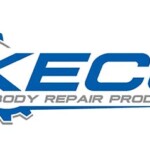Improving Efficiency as Glue Pull Repair Goes Mainstream
by Alana Quartuccio
Paintless dent removal (PDR). Most collision repairers are likely familiar with – but perhaps not necessarily skilled in – this method of repair…but that is rapidly changing as this less invasive method for dent removal is becoming the preferred method of choice.
 PDR may sound like a relatively new form of repairing vehicle damage, but it’s quite the opposite! It has actually existed for decades, rumored to have originated in a Mercedes Benz factory in Germany where workers would use a tablespoon and their thumbs to push out and remove dents.
PDR may sound like a relatively new form of repairing vehicle damage, but it’s quite the opposite! It has actually existed for decades, rumored to have originated in a Mercedes Benz factory in Germany where workers would use a tablespoon and their thumbs to push out and remove dents.
It’s come a long way since and continues to gain popularity at lightning speeds! Not only are more collision repairers using the method, but some companies have made this method of repair a major part of their foundation.
“With PDR, you don’t use any paint and you fix the dent completely flat and there are highly specialized guys and girls out there trained to perform this method,” explains Scott Stayton, director of marketing and sales at KECO Body Repair Products, which specializes in making the tools for pulling dents.
In fact, KECO has taken the idea and built on it further, developing what they call Glue Pull Repair (GPR), a new and less invasive way of repair that really is shaping the way for the future. “KECO came up with the term back in 2018 in order to make the distinction between PDR and GPR,” adds Stayton. GPR eliminates stud welding, so repairs are far less intrusive with less post-pull work pounding, filling, priming and painting. It results in fast repairs with minimal, if any, body filler.
KECO’s focus on GPR and improving auto body repair efficiency all stems from president Chris White’s passion for collision repair and his dedication to produce products that help technicians do what they do best, according to Stayton. “It was Chris’ vision that if we can repair small damage this way, why not repair larger damage with this method.”
“It’s become more mainstream to pull the damage out with glue,” Stayton explains of GPR. “With traditional auto repair, technicians will grind the paint down to bare metal, spot weld tabs on the dent area and then pull it out. The problem with that is the small contact area of the tab is not an efficient way of moving the metal because the metal will want to move towards the point of contact, and you can create additional damage that would have to be straightened. It’s not that one can’t straighten it – it’s been done for years – but it will usually require the use of more filler and more time.
“With GPR, we’re able to offer various sized plastic tabs and material that fit the shape of the damage. No vehicle damage is gonna be the same, and all vehicles are different. So when you place the right size and material tab in the correct location, we can create an efficient metal flow where it all moves out together, similar to how it was damaged. It’s just a much more efficient way to pull the damage out, and you don’t have to remove the paint.”
GPR can also save on time by eliminating the need for removing interior pieces or the need to redo the corrosion resistance on the inside of a panel that can likely be burned off due to spot welding. In many cases, it can also help salvage panels that would otherwise need to be replaced, which is especially key in times of challenges such as parts shortages which have been an issue since the pandemic.
“It’s starting to increase in popularity as people understand the benefits. Just like with anything, it’s a culture change. One of the biggest things KECO does is provide onsite training. Last year, we conducted training at over 200 shops for those who wanted to learn how to use our system. What they are essentially getting from us is a culture change as they are shown how to repair panels more efficiently, cleaner and safer.”
GPR will be especially key as EV repairs increasingly come into play.
“Some of the EV manufacturers won’t allow stud welding, and you would have to power down the vehicle. With our system, you would not have to do so unless the damage creates the need via OEM procedures..”
Based on the attention this method is getting as it’s becoming more commonplace in shops all around the world, it surely makes sense for shops to gain some comfort and familiarity with GPR.
Want more? Check out the February 2024 issue of Texas Automotive!
